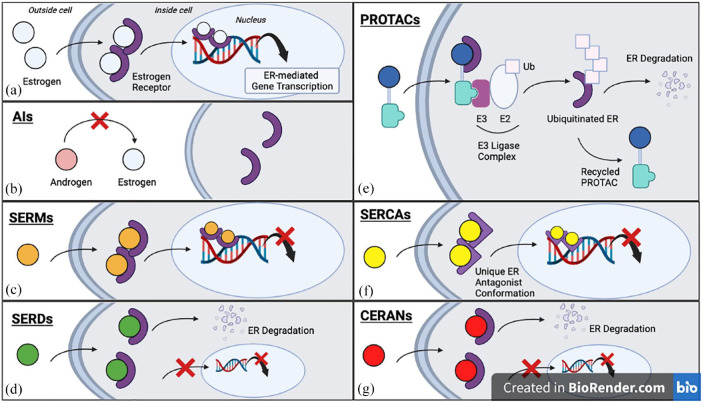Figure 2.
The mechanisms of action of different ETs, simplified for conceptualization. (a) Estrogen binds the ER, a ligand-dependent transcription factor, promoting ER dimerization and translocation to the nucleus. The estrogen-bound ER dimer regulates gene expression that facilitates cell growth and survival. (b) The AIs block the aromatization of androgens to estrogen. (c) SERMs competitively bind ER and mediate a tissue-dependent anti-estrogen effect. (d) SERDs slow ER nuclear translocation, increase receptor turnover, and reduce transcription of ER-regulated genes. (e) PROTACs mediate an interaction between ER and the E3 ligase complex, facilitating ubiquitination of ER and subsequent proteasomal degradation; the PROTAC molecule is recycled in this process. (f) SERCAs covalently bind the C530 residue in the ER ligand-binding domain and promote a unique antagonist conformation that decreases ER-regulated gene transcription. (g) CERANs bind ER and potentiate their effect by inducing ER degradation and blocking transcriptional activity.
AIs, aromatase inhibitors; CERANs, complete estrogen receptor antagonists; ER, estrogen receptor; ETs, endocrine therapies; PROTACs, proteolysis targeting chimers; SERCAs, selective estrogen receptor covalent antagonists; SERDs, selective estrogen receptor degraders; SERMs, selective estrogen receptor modulators.

